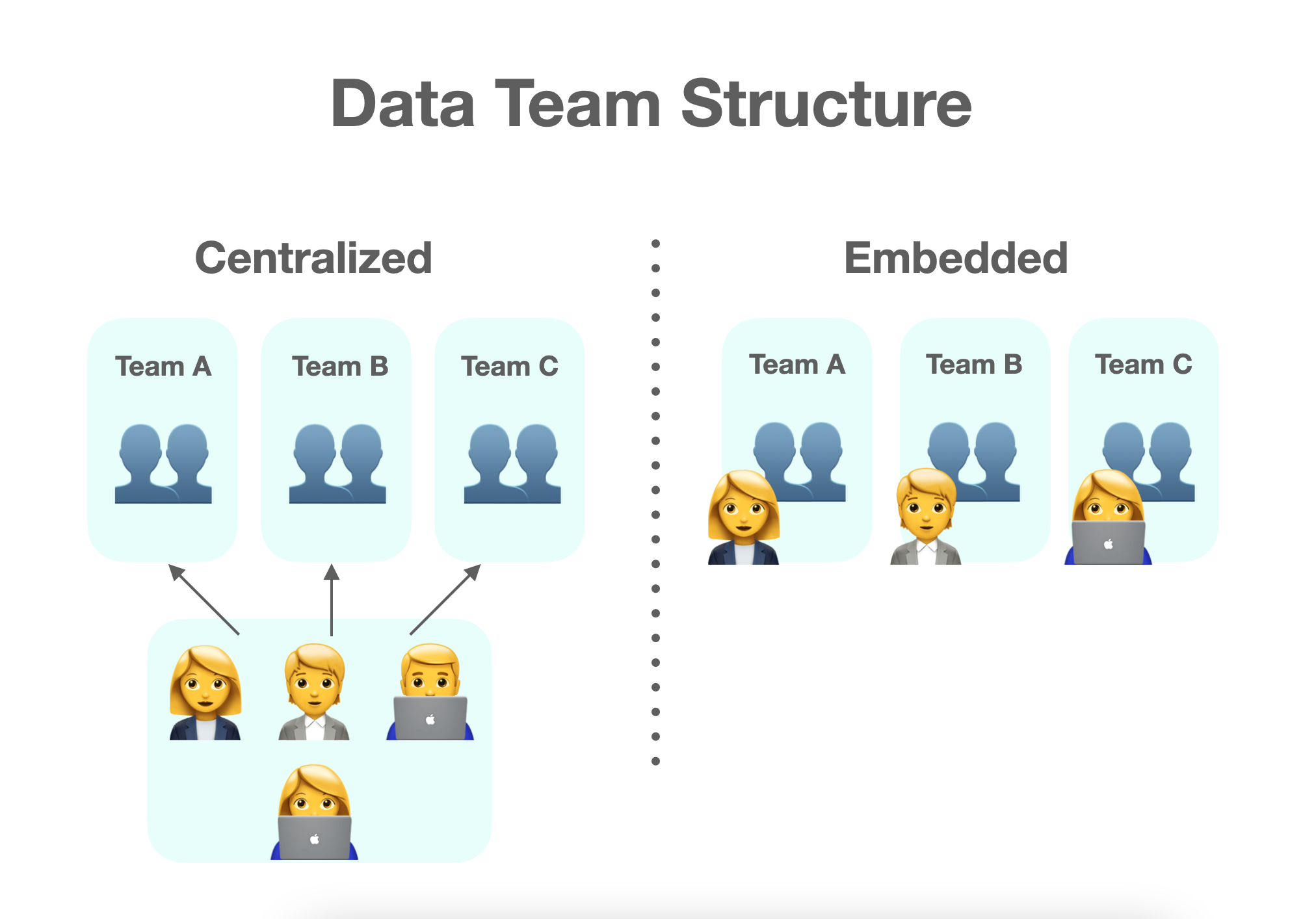Choosing the right data team structure for your organization
Building a strong data team starts with choosing the right structure: centralized or embedded. The right setup depends on your company’s data maturity and business goals.
At BombBomb, we had to decide between these two models. Here’s what we learned to help you pick the best data team structure for your organization.
Centralized vs. embedded data teams
What Is a centralized data team?
A centralized data team works as a single unit, supporting all business functions from a central hub. This model keeps data engineers, analysts, and scientists together, ensuring consistency and collaboration.
What is an embedded data team?
An embedded data team assigns data professionals directly to specific business units, such as marketing, product, or finance. This structure allows data experts to work closely with their assigned teams, making sure that data-driven insights align with business needs.

How to choose the right data team structure model
Before deciding on a structure, consider:
- Company size and data maturity: A single data person? A centralized team is your best bet.
- Business goals: Need real-time, department-specific insights? Embedded teams might be the way to go.
- Collaboration and alignment: Centralized teams drive peer learning, while embedded teams foster business relationships.
Centralized data team: pros & cons
- ✅ Clear priorities across departments.
- ✅ Strong team collaboration and skill development.
- ✅ Consistent data governance and strategy.
- ❌ Can become a bottleneck if overwhelmed with requests.
- ❌ Less integration with specific business units.
Embedded data team: pros & cons
- ✅ Closer collaboration with business units.
- ✅ More focused insights tailored to department needs.
- ✅ Less context switching means increased efficiency.
- ❌ Risk of misalignment between data professionals in different departments.
- ❌ Limited career growth if data pros are siloed.
Our іhift from уmbedded to сentralized
At BombBomb, we started with an embedded model, but struggled with poor prioritization and slow project completion due to our lower data maturity. Shifting to a centralized model helped us:
- Improve data accessibility across teams.
- Enhance data quality and governance.
- Align data team goals with company-wide objectives.
- Foster a collaborative, trust-driven culture.
Key takeaways
- There’s no one-size-fits-all model—pick what fits your business.
- A centralized data team works best for companies needing strong governance and prioritization.
- An embedded data team makes sense if real-time, department-specific insights are a priority.
- Your data team structure isn’t set in stone—adapt as your company evolves.




